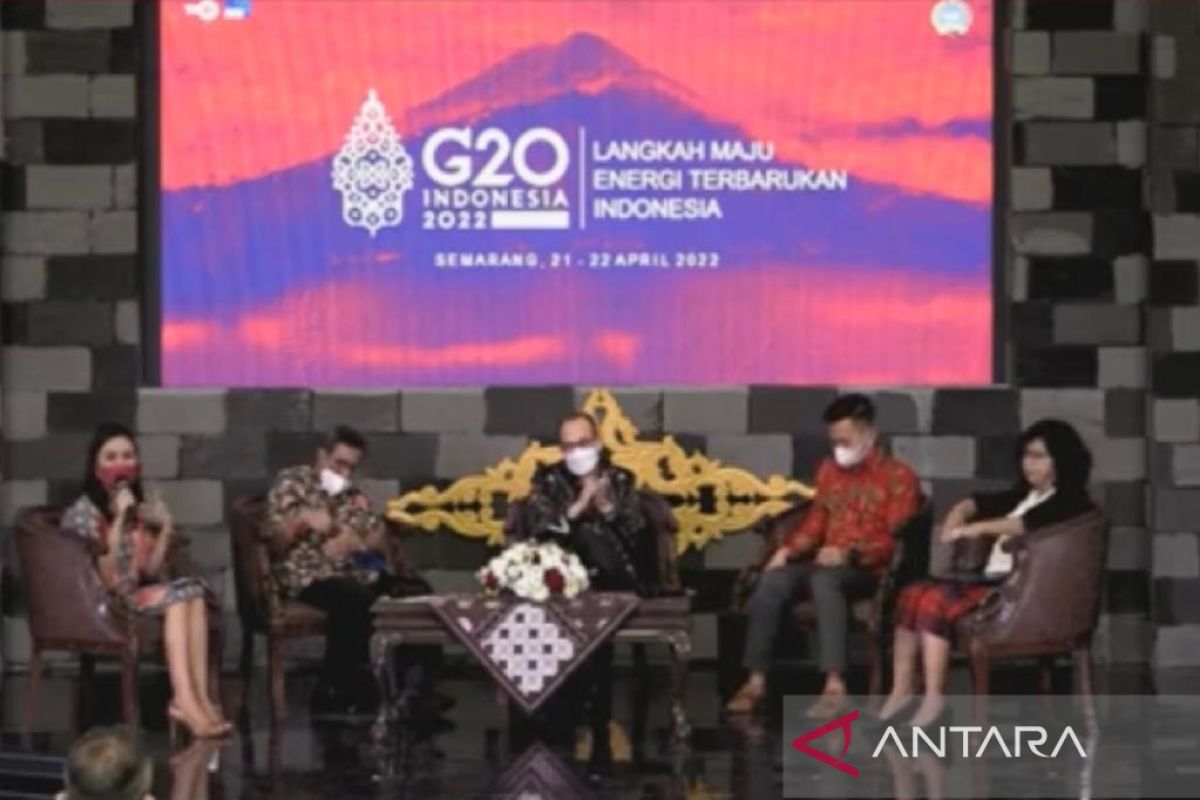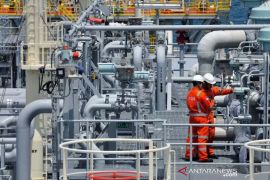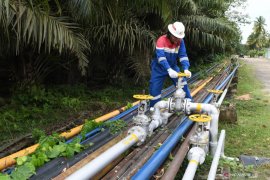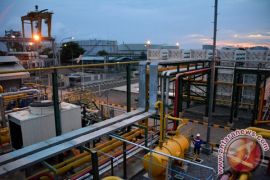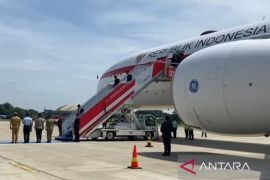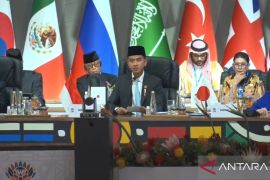However, as the demand for primary energy will continue to rise along with the surge in population and economic growth, natural gas plays a strategic role in energy transition toward 100 percent renewable energy sources for electricity.
Natural gas functions as replacement fuel for intermittent renewable energy and to fulfill domestic demand.
Through the G20 multilateral cooperation forum, the Indonesian government encourages further utilization of natural gas during energy transition program.
This is done to achieve balance between fulfilling the ever increasing energy demand and reducing greenhouse gas emission.
Oil and Natural Gas Director at the Energy and Mineral Resources Ministry Tutuka Ariadji stated that natural gas plays an important role during energy transition process.
This is because there is still large quantity of natural gas, its infrastructure has developed, the demand for it surges, and it has lower carbon emission.
According to the data from The Intergovernmental Panel on Climate Change (IPCC), UN's agency to evaluate knowledge related to climate change, natural gas only produces 469 gram of carbon dioxide per kilowatt-hour (kWh).
This emission figure is lower compared to coal that reaches 1,001 gram carbon dioxide per kWh and crude oil with 840 gram carbon dioxide per kWh.
"Investment in natural gas project needs to be bolstered globally to encourage further utilization of natural gas," Ariadji noted during a G20 event that talked about natural gas in Jakarta in the middle of May 2022.
Indonesia believes that international cooperation, including through G20 forum, will provide major contribution in bolstering the role of natural gas to support the goal to reach carbon neutrality target.
Related news: PGN, PIM to develop blue ammonia to reduce emissions
Emission reducing technology
Indonesia has officially become the host of G20 meetings since December 1, 2021, until the G20 Summit in November 2022.
There are three priority issues discussed within the G20 forum: global health architecture, sustainable energy transition, and digital as well as economic transformation.
The ministry has proposed carbon capture, utilisation and storage (CCUS) to become one of the cooperation projects within G20 forum.
The Indonesian government believes that the development of technology is one of the strategies to reduce emission for almost all G20 members.
Several members already have large-scale policies and projects, few others are still carrying out pilot projects, while the rest is still in initiation stage.
Thus far, Indonesia has conducted cooperation with Japan concerning the development of CCUS and will improve cooperation with other countries that also have experiences in developing the technology such as the United States and Canada.
Within International Energy Agency's Sustainable Development Scenario, which seeks to reduce global carbon dioxide emission in the energy sector to zero by 2070, CCUS contributes almost 15 percent from emission cumulative reduction compared to Stated Policies Scenario.
Several CCUS studies or projects are currently undergoing, such as the Gundih Field which is in a joint study stage with Japan.
Gundih CCUS is targeted to become operational in 2024 or 2025 and can potentially absorb more or less three million ton of carbon dioxide for 10 years.
Moreover, it can also improve the production of natural gas by 36 BSCF and condensate by 382.7 MSTB.
In addition, there is also the Tangguh project which is targeted to become operational in 2026 and can potentially absorb 25 million ton of carbon dioxide for 10 years and bolster natural gas production by 300 BSCF.
Head of SKK Migas, a special task force focusing on oil and natural gas, Dwi Soetjipto noted there are many basins in Indonesia.
Majority of them, especially in the eastern region, are natural gas basin that can drive production up to 12 BSCFD in 2030.
Currently, the average 70 percent of the development plan consist of the development of natural gas fields because more than 50 percent of exploration well findings within the last decade are natural gas.
"Currently, people already conduct a trial to bring carbon in a liquefied form to be brought to somewhere else, and then stored them into CCUS," Soetjipto noted.
"Indonesia has many reservoirs that the world can utilize to store carbon dioxide," he informed.
Related news: Gas better energy alternative during transition period: PGN
Indonesia's potential
Ever since it was produced in 1965, utilization of natural gas for household purposes in Indonesia has continued to rise with the passing of time.
Earlier, natural gas was more frequently used for export purpose. However, currently, more than 60 percent of Indonesian gas production is utilized to fulfill domestic demand.
The ministry recorded that the biggest consumers of gas in Indonesia are industry, electricity plants, and fertilizer plants.
Meanwhile, around 22.7 percent of them are exported in the form of liquefied natural gas and, and 13.13 percent are exported through pipes. The total gas consumption reach 5.734,43 BBUTD.
In 2020, natural gas mix in power plant was recorded to be 21.2 percent with a volume that reached 6.557 MMSCFD. This figure is estimated to increase to 21.8 percent with the volume of 11.728 MMSCFD in 2030.
Related news: PGN improving infrastructure, supply to support energy transition
According to the National Energy General Plan, the natural gas portion is targeted to reach 24 percent in the energy mix in 2050.
The abundance of reserves becomes the reason why the Indonesian government increases natural gas utilization.
Some 62.39 TSCF of total natural gas reserve is spread out across Indonesia's regions.
The country invites all potential investors to contribute in developing the reserves considering that energy transition must be done comprehensively in various stages.
It also has to be done by considering competitiveness, cost , as well as natural gas availability and sustainability to ensure smooth transition and energy resilience.
Related news: The importance of LNG in Indonesia
Related news: Ministry selects Waskita Karya to build natural gas network package
Editor: Fardah Assegaf
Copyright © ANTARA 2022
